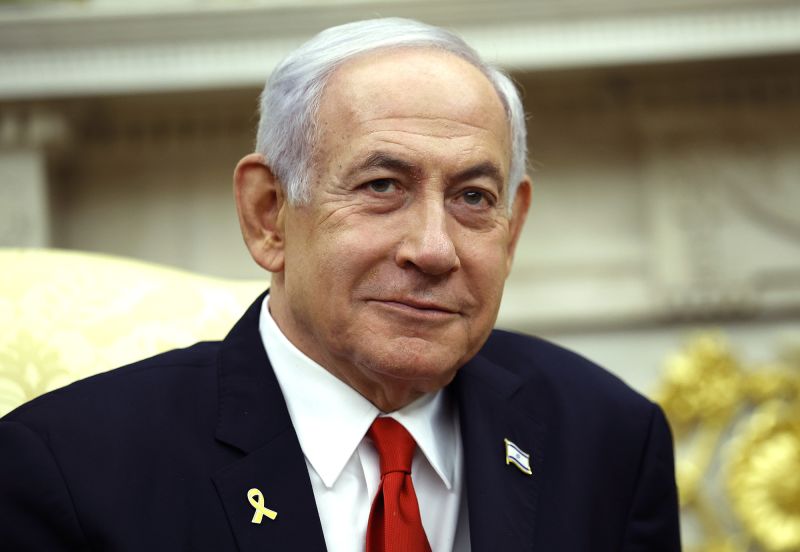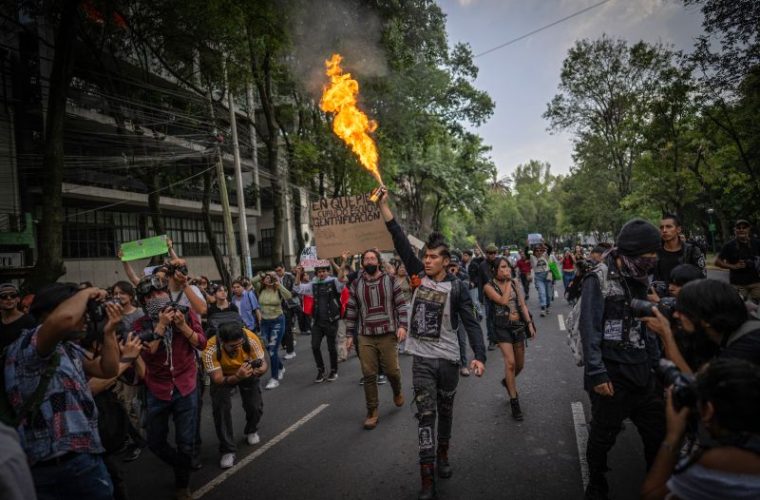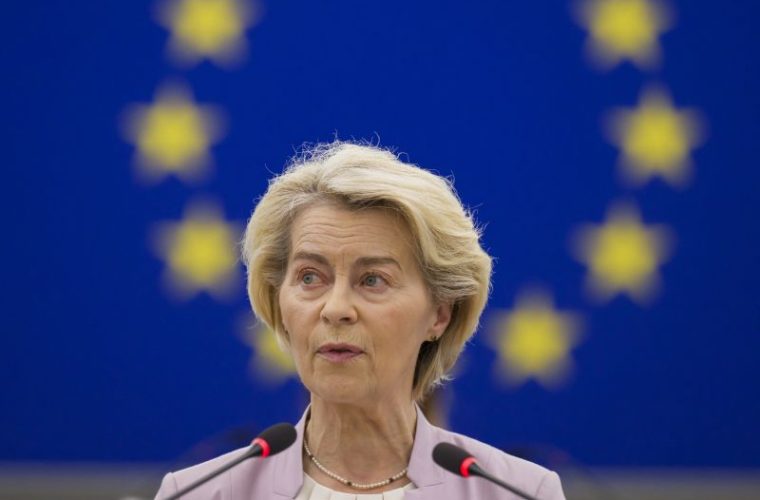
Trump’s Middle East trip leaves Netanyahu watching from the sidelines again
The first stop was Riyadh.
Just a few months into his new administration, the president of the United States met the king of Saudi Arabia as part of an effort to push forward relations with the Arab world.
From there, it was off to another regional capital, where the leader of the free world gave a speech about a new vision for the Middle East.
Conspicuously missing from the itinerary was a stop in Israel.
The year was 2009, and the president was Barack Obama. His decision not to visit Prime Minister Benjamin Netanyahu, who had just returned to office, was viewed as an insult. It marked the beginning of what many to this day see as Obama’s fractured relationship with Israel, and particularly with the country’s longest-serving leader.
But as President Donald Trump prepares for his first visit to the region in his second term, the same elephant sits in the same corner of the Oval Office. Trump’s itinerary includes Saudi Arabia – where he’ll arrive early Tuesday local time– Qatar and the United Arab Emirates.
The White House has called it a “historic return to the Middle East” and promised “a shared vision of stability, opportunity and mutual respect.” Israel is once again not on the itinerary. And after Trump blindsided Israel several times already – announcing talks with Iran, a deal with Yemen’s Houthi rebels, and direct talks with Hamas – Israeli officials are concerned another surprise could be coming.
‘Without results, he’s not coming’
Israeli officials tried to inquire about the possibility of a stop in Jerusalem or Tel Aviv during Trump’s trip, according to a source familiar with the matter. But the president doused the flicker of those hopes last week when he said he had no plans to stop in Israel.
“We will be doing it at some point,” Trump said. “But not for this trip.”
Trump might have been persuaded to add the visit to his itinerary if he could claim some sort of victory, whether it be a ceasefire agreement in Gaza, a humanitarian aid plan, or something else. But with Israel poised to expand its war in Gaza, there are no such deliverables. Even with the imminent release of hostage Edan Alexander on Monday, prospects for a comprehensive ceasefire still seem distant.
“Without results, he’s not coming (to Israel),” said the source.
Netanyahu prided himself on being the first world leader to visit Trump in his second term in February. On his second visit, in April, he became the first leader to try to begin negotiations for a new trade deal after Trump announced sweeping tariffs on imports. The prime minister left the White House without a trade deal and with a new concern: Trump’s shock announcement that the US would begin negotiating a new nuclear deal with Iran.
The problem for Netanyahu is that he has little leverage in Washington right now, said Alon Pinkas, a former Israeli diplomat.
Despite years of being perhaps Trump’s most vocal international supporter, Netanyahu has few cards left to play, Pinkas said. Under Democratic administrations, Netanyahu has used his Republican supporters to put pressure on the White House. But Netanyahu has never criticized Trump openly, and he’s unlikely to start.
“He’s got nothing right now,” Pinkas said.
‘A policy of surprises’
As Trump’s visit to the region nears, Israeli officials’ concerns about what it will bring have only grown.
In the weeks leading up to his trip, Trump has made a series of moves that have left the Israeli prime minister looking little more than a frustrated bystander. Trump has pursued negotiations with Iran over its nuclear program that don’t preclude the possibility of Tehran maintaining some civilian nuclear capabilities; he agreed to a ceasefire with the Houthis that doesn’t halt the Yemeni group’s attacks on Israel; and according to a Reuters report is also no longer demanding that Saudi Arabia normalize relations with Israel as a condition to facilitating a Saudi civil nuclear program.
And on Sunday, the Trump administration bypassed Israel to seal a deal with Hamas to free Edan Alexander, the last known living American hostage in Gaza, with Trump framing it as a step “to put an end to this very brutal war and return ALL living hostages and remains to their loved ones.”
Israeli officials are now concerned what a week spent meeting with and being feted by Gulf leaders – all of whom have been critical of Israel’s military assault in Gaza and its ongoing humanitarian blockade of the strip – will mean for Trump’s posture vis-à-vis the war and ceasefire negotiations.
Leading up to Trump’s trip, the US has been heavily pressing Egypt and Qatar to convince Hamas to agree to the release of some hostages, a source familiar with the negotiations said, in exchange for several weeks of ceasefire and the entry of humanitarian aid.
A comprehensive agreement to end the war has remained out of reach, but Trump has made clear that that is his goal.
“Hopefully this is the first of those final steps necessary to end this brutal conflict,” Trump said on social media on Sunday.
The result is that Trump and Netanyahu seem to be more at odds than ever, a situation that comes shortly after Netanyahu doubled down on the war and made explicitly clear he believes defeating Hamas is more important than securing the release of the hostages. If a deal with Hamas for the return of more hostages seems within reach, the US will drive up the pressure on Israel to accept it, another source familiar with the matter said.
Until now, there were major doubts about whether Hamas’ leader in Gaza, Mohammad Sinwar, would agree to a limited deal. But Hamas seems to have shrewdly outplayed Israel this time around when it comes to Trump.
And Trump’s visit to the region will serve as a pressure point to potentially unlock a deal.
Trump moving forward ‘like a bulldozer’
“There has to be a practice of no surprises” on either side, said Dan Shapiro, a former US Ambassador to Israel and senior fellow at the Atlantic Council, a think tank in Washington, DC. “Otherwise, the trust that is so essential for this partnership breaks down really, really quickly.”
“He’s clearly frustrated with Netanyahu, as every other president who’s worked with Netanyahu has been,” Shapiro said.
Meanwhile, Trump’s man in Jerusalem, US Ambassador Mike Huckabee, has tried to downplay speculation about a rift between the two leaders, and said he would “fully expect” Trump to visit Israel this year.
“No president has ever cared as much and done as much as President Trump has for the state of Israel,” Huckabee told Israel’s Channel 13 News in an interview aired Saturday evening. “And his relationship with the prime minister is, I think, remarkable.”
Israelis see it differently.
The front page of the prominent Yedioth Ahronot newspaper last Thursday showed a cartoon of Trump with the headline “A policy of surprises.” As Trump prepares a soup, Netanyahu sits nervously in the background.
Even the ardently pro-Trump Israel HaYom newspaper has keyed in on the apparent rift with Netanyahu. Columnist Shai Golden wrote in an opinion article over the weekend, “The old saying ‘Be careful what you wish for, you might just get it’ perfectly captures the trap Netanyahu has fallen into with Trump.”



